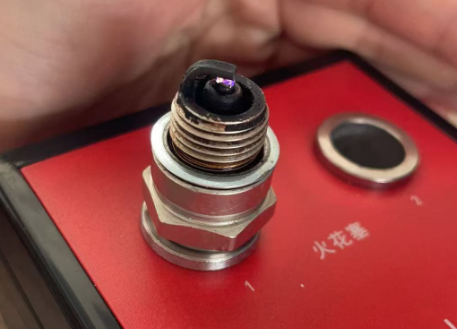The difference between resistance and non-resistance spark plugs
Release time:2025-10-22
Resistance spark plugs refer to the resistance in the circuit between the center electrode and the terminal block. According to the standard, spark plugs with a resistance value less than 2Ω are defined as non-resistance spark plugs; those with a resistance value between 1-12 kΩ are defined as resistance spark plugs. All other spark plugs, unless in special circumstances, are considered unsuitable. Some spark plugs are designed with a resistance value of 10-20 kΩ for special purposes.
Resistance spark plugs refer to the resistance in the circuit between the center electrode and the terminal block. According to the standard, spark plugs with a resistance value less than 2Ω are defined as non-resistance spark plugs; those with a resistance value between 1-12 kΩ are defined as resistance spark plugs. All other spark plugs, unless in special circumstances, are considered unsuitable. Some spark plugs are designed with a resistance value of 10-20 kΩ for special purposes.
The internal resistance of a spark plug serves to protect against electromagnetic interference. This is driven by environmental protection requirements in developed countries (hence the term "environmentally friendly spark plugs"). Furthermore, with the increasing number of modern engines and their associated electrical equipment, the strong electromagnetic fields generated by spark plugs can have a serious, even destructive, impact on the operation of other equipment.
There are generally two ways to create internal resistance in a spark plug: a solid resistor placed within the plug; and a sintered, integral resistor. The ceramic interior of the former is less airtight than the latter, while the appearance is more distinctive due to its lack of sintering. Even at high temperatures, the components maintain a good color consistency. However, their application scenarios are limited, and they are only suitable for small engines. Non-resistor spark plugs also use these two molding methods, differing in the powder formula and the presence or absence of a resistor.
A key indicator for resistor spark plugs is the aging performance of the resistor, which typically refers to whether the internal resistance change rate remains within the specified range after a period of use. Excessive resistance change indicates that the resistance value may exceed the specified resistance range within the specified design life. Excessive resistance not only significantly affects the energy loss of the ignition system, but also significantly reduces the durability of the spark plug due to excessive heat generation, directly affecting its service life. Therefore, a stable resistance value is crucial for spark plugs.
λ=(R0-R1)/R0
Many videos use the spark size to determine the quality of spark plugs, but these evaluation criteria are inherently one-sided. The resistor itself is an energy-consuming component, and the spark intensity of a resistor-type spark plug is inevitably weaker than that of a non-resistor spark plug.
Besides aging performance, a more direct method for evaluating sintered resistor-type spark plugs is cross-section analysis. Cutting the resistor section directly to examine the internal resistance fill and density can also reveal the quality and reliability of the process. The reliability can also be determined by factors such as the number of punching and pressing machines used, whether there is a three-layer structure, and whether the connecting material is copper, aluminum, or iron. Different materials are suitable for different engine temperatures. The resistance value is a range value for sintered spark plugs. The resistance value formed by the solid connection of the internal resistor material is closely related to the overall length and the edge of the metal material connection. Therefore, the resistance value measured for each spark plug is

different. However, the discreteness and normal distribution of the overall resistance value of the same batch of products can often reflect the quality of the production equipment. The better the consistency of the spark plug resistance value, the better the stability of the power output for multi-cylinder engines. However, this performance cannot be measured by non-professional instruments. In other words, within the specified resistance range, there is no obvious difference in the resistance value of each spark plug of the same engine. For example, the fluctuation of the speed after stabilization, the vibration amplitude of the engine, etc. are all very subtle differences. If you want to get a product with a specified small range of resistance value, you can get it through resistance value screening.
Previous Page
Next Page
Previous Page
Next Page
Related News
Contact Information
Add: Building A3-306 Lugu Enterprise Square, No.27 Wenxuan Road, Changsha, Hunan Province ,China


